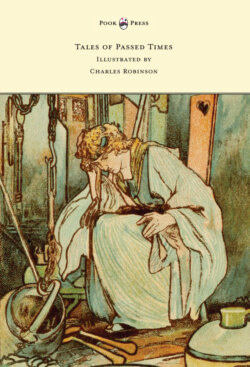Читать книгу Tales of Passed Times - Illustrated by Charles Robinson - Charles Perrault - Страница 8
На сайте Литреса книга снята с продажи.
ОглавлениеBiography
of
Charles Perrault
Charles Perrault was born on 12th January 1628. He was a French author and member of the Académie française, who laid the foundations for a new literary genre; the fairy tale. The best known of Perrault’s tales include Le Petit Chaperon (Little Red Riding Hood), Cendrillon (Cinderella), Le Chat Botté (Puss in Boots), La Belle au bois dormant (The Sleeping Beauty) and La Barbe Bleue (Bluebeard). Many of Perrault’s stories, which were re-written by the brothers Grimm, continue to be printed and have been adapted to opera, ballet (such as Tchaikovsky’s The Sleeping Beauty), theatre and film (Walt Disney). Perrault was a highly influential figure in the seventeenth century French literary scene and was also the leader of the ‘Modern faction’ during the ‘Quarrel of the Ancients and the Moderns.’
Perrault was born into a wealthy bourgeois Parisian family, the seventh child of Pierre Perrault and Paquette Le Clerc. He attended good schools in the city and studied law before embarking on a career in government service (following in the footsteps of his father and older brother Jean). Perrault also took part in the creation of the Academy of Sciences as well as the restoration of the Academy of Painting. In 1654 he moved in with his brother Pierre, who had purchased a post as the principal tax collector of the city of Paris. ‘Buying’ official government roles was a common practice in seventeenth century France, as chances for self-aggrandizement were rife! Following on from this, when the Academy of Inscriptions and Belles-Lettres was founded in 1663, Perrault was appointed as its secretary, and served under Jean Baptiste Colbert (finance minister to Louis XIV).
In 1668 Perrault wrote La Peinture (Painting) to honour the King’s first painter, Charles Le Brun. He also wrote Courses de testes et de Bague (Head and Ring Races, 1670) to commemorate the 1662 celebrations staged by Louis for his mistress, Louise-Françoise de La Baume le Blanc, duchesse de La Vallière. Perrault himself got married in 1672, to Marie Guichon (aged just nineteen). She sadly died only six years later. This was a very busy time in Perrault’s life and in 1669 he helped Louis XIV design the gardens of Versailles. Perrault persuaded the King to include thirty-nine fountains, each representing one of the fables of Aesop in the labyrinth section of the Versailles gardens, and the work was carried out between 1672 and 1677. Water jets spurting from the animals mouths were conceived to give the impression of speech between the creatures. There was a plaque with a caption and a quatrain written by the poet Isaac de Benserade next to each fountain.
On being elected to the Académie française in 1671, Perrault initiated the Quarrel of the Ancients and the Moderns, which pitted supporters of the literature of Antiquity (the ‘Ancients’) against supporters of the literature from the century of Louis XIV (the ‘Moderns’). Perrault was on the side of the Moderns and wrote Le Siècle de Louis le Grand (The Century of Louis the Great, 1687) and Parallèle des Anciens et des Modernes (Parallel between Ancients and Moderns, 1688–1692) where he attempted to prove the superiority of the literature of his century. Le Siècle de Louis le Grand was written in celebration of Louis XIV’s recovery from a life-threatening operation. Perrault argued that because of Louis’s enlightened rule, the present age was superior in every respect to ancient times.
Despite this pandering to the crown, in 1695, when he was sixty-seven years old, Perrault lost his post as secretary. It was at this point that he decided to dedicate himself to his children and began writing stories, inspired by old oral traditions of French and European folklore. In 1697 Perrault published Tales and Stories of the Past with Morals (Histoires ou Contes du Temps passé), subtitled Tales of Mother Goose (Les Contes de ma Mère l’Oye). It was an enormous success, mostly inspired by earlier fairy tales written in the salons, notably by Marie-Catherine Le Jumel de Barneville, Baroness d’Aulnoy, who coined the phrase ‘fairy tale.’ Barneville in fact, was writing such stories as early as 1690. Even so, many of the most well-known tales that we hear today, such as Cinderella and Little Red Riding Hood are told as he wrote them. Perrault had actually published his collection under the name of his last son (born in 1678), Pierre (Perrault) Darmancourt (‘Armancourt’ being the name of a property he bought for him), probably fearful of criticism from the ‘Ancients.’
In the tales, Perrault used images from around him, such as the Chateau Ussé for The Sleeping Beauty and in Puss in Boots the Marquis of the Château d’Oiron, and contrasted his folktale subject matter with details, asides and subtext drawn from the world of fashion. Perrault died in Paris, the city of his birth – and adult life – in 1703 at the age of seventy-five.
